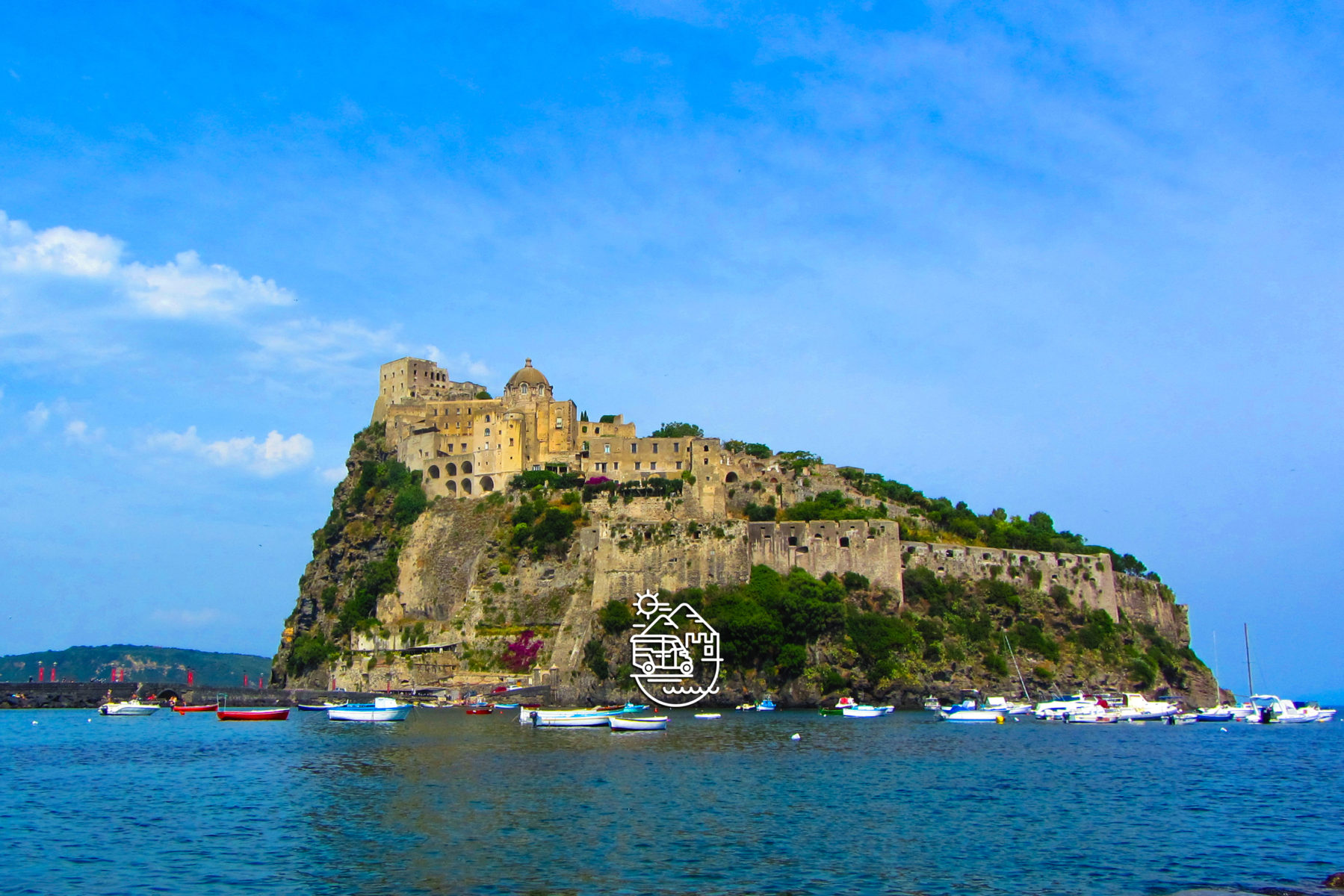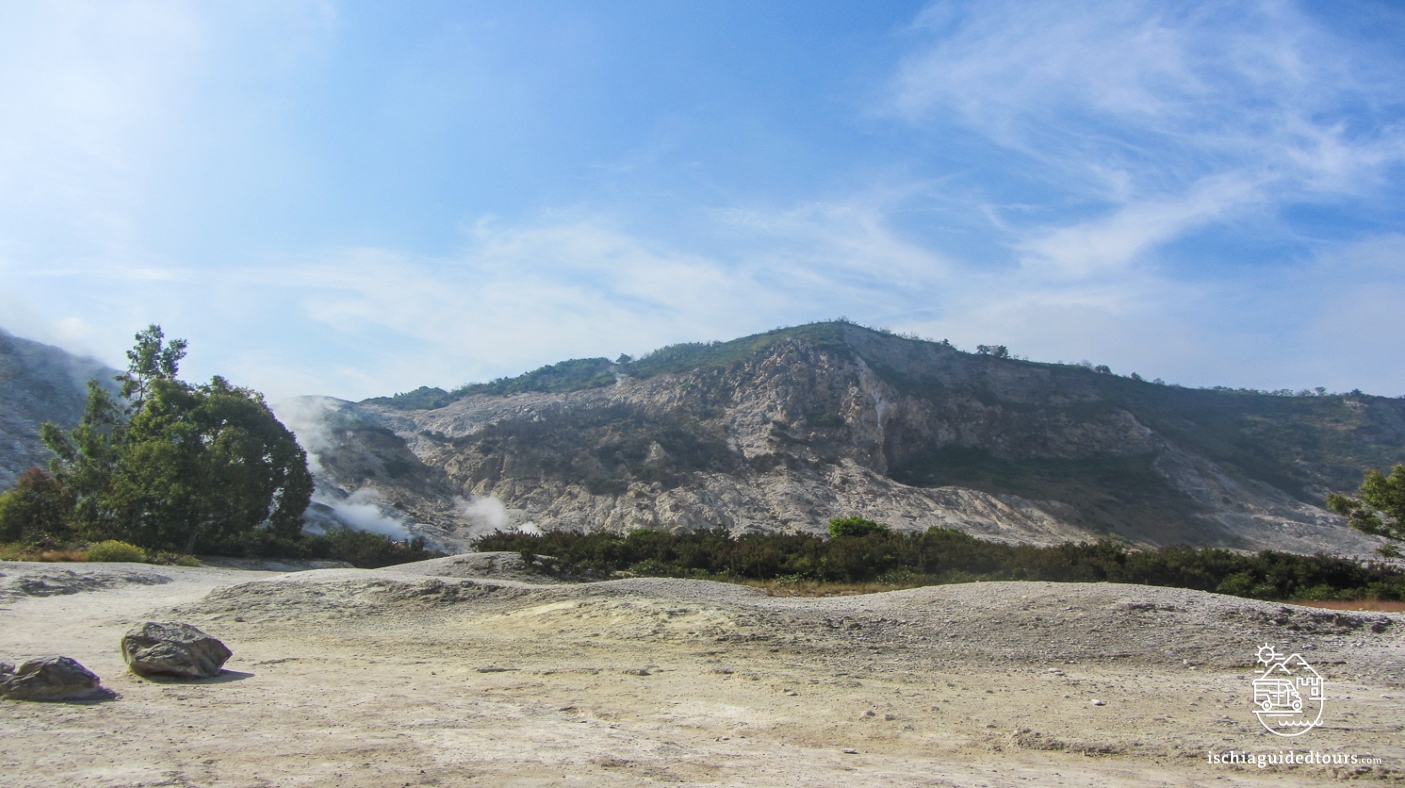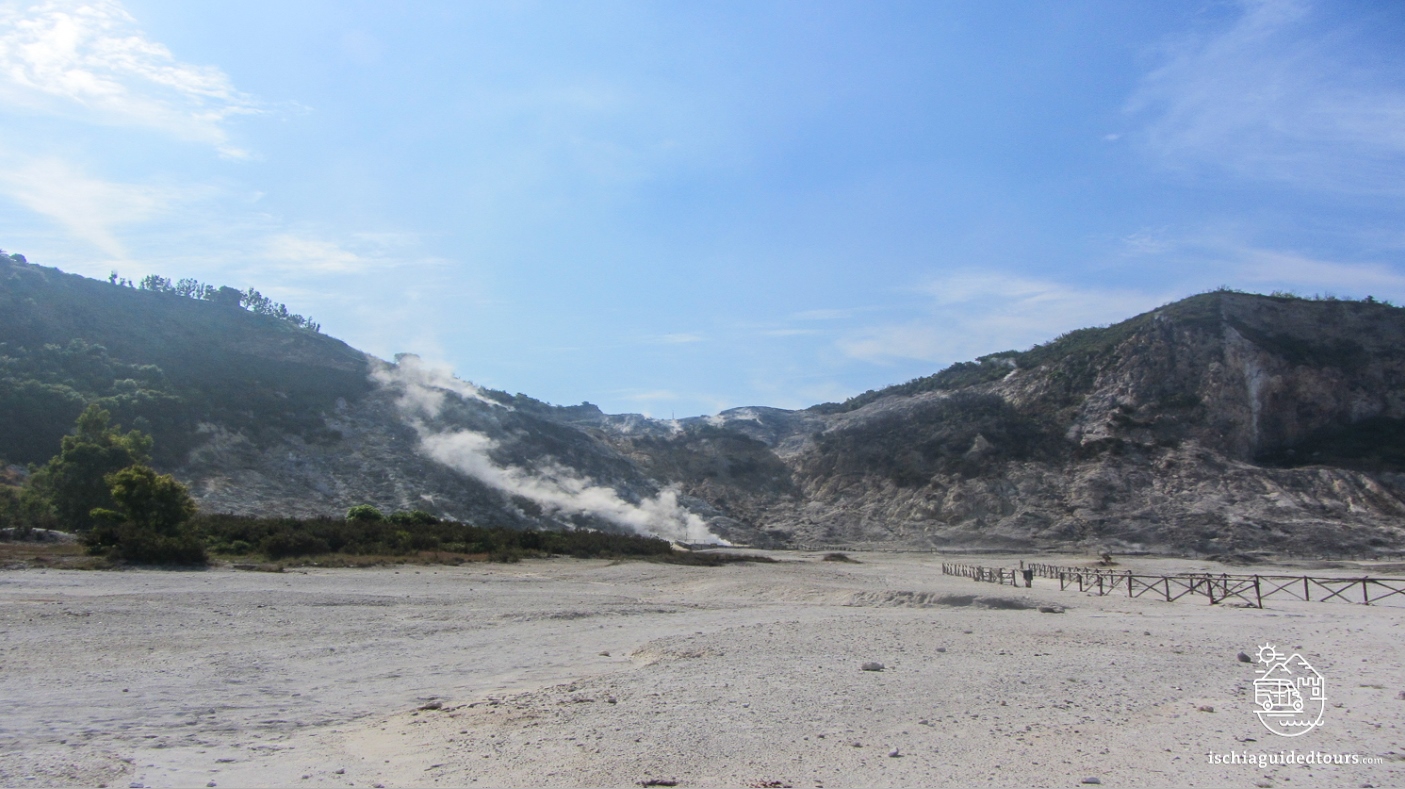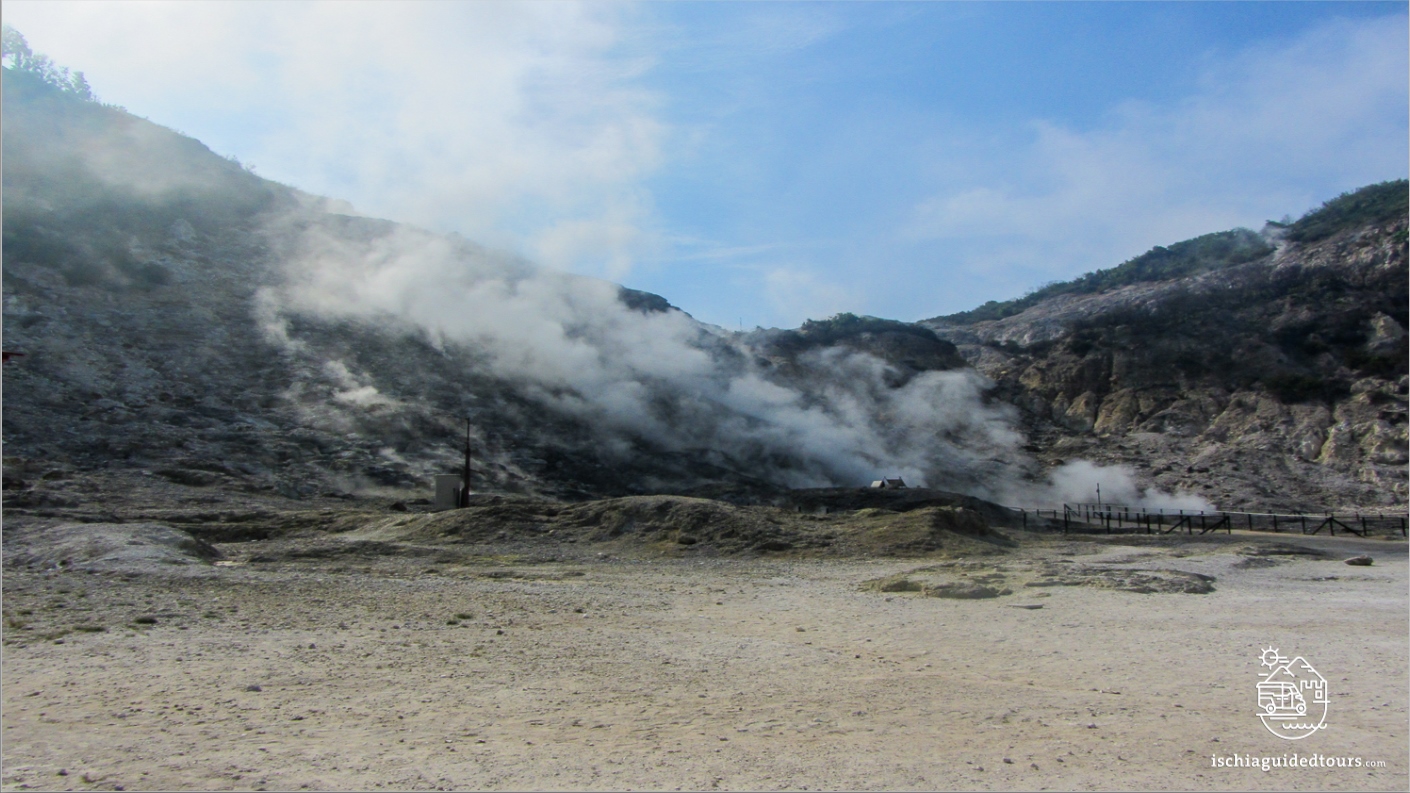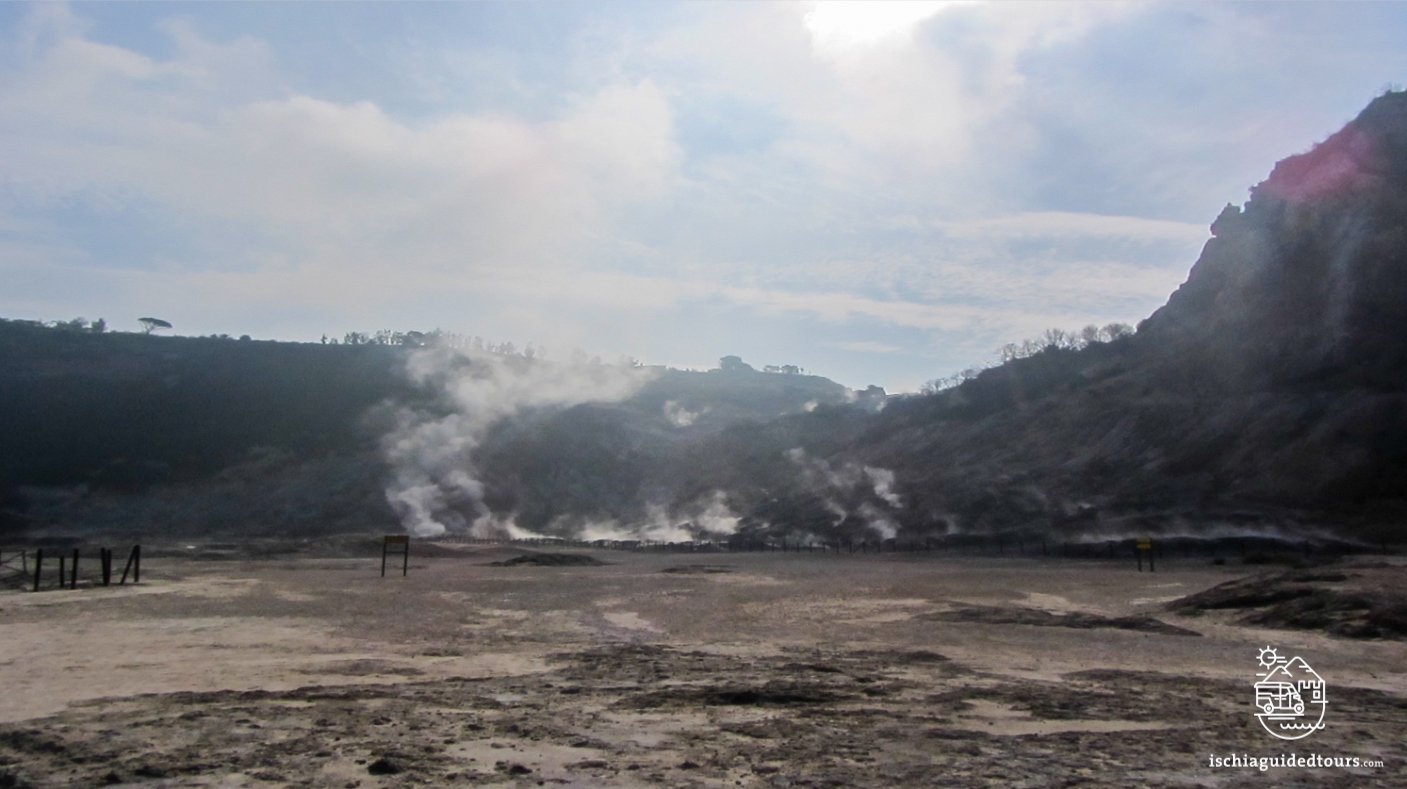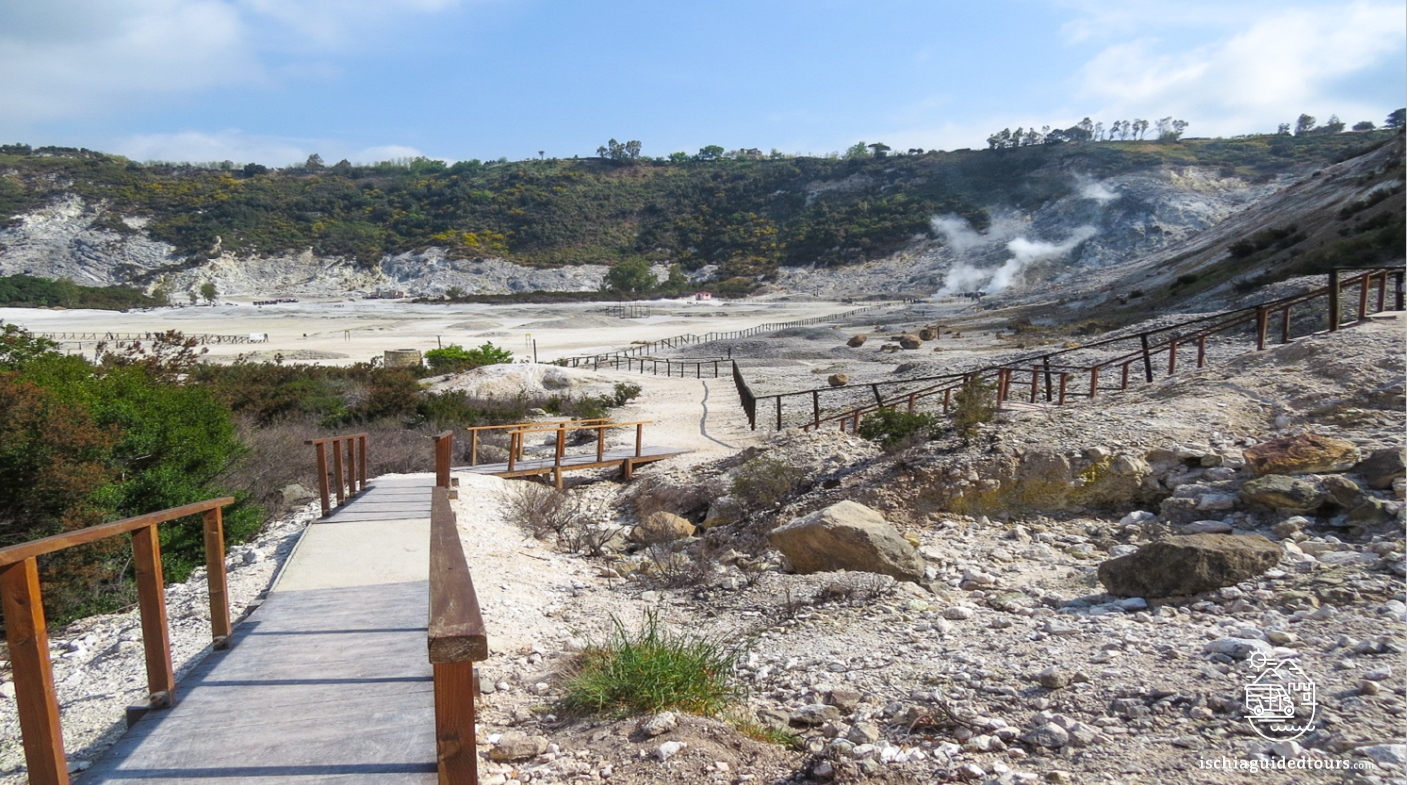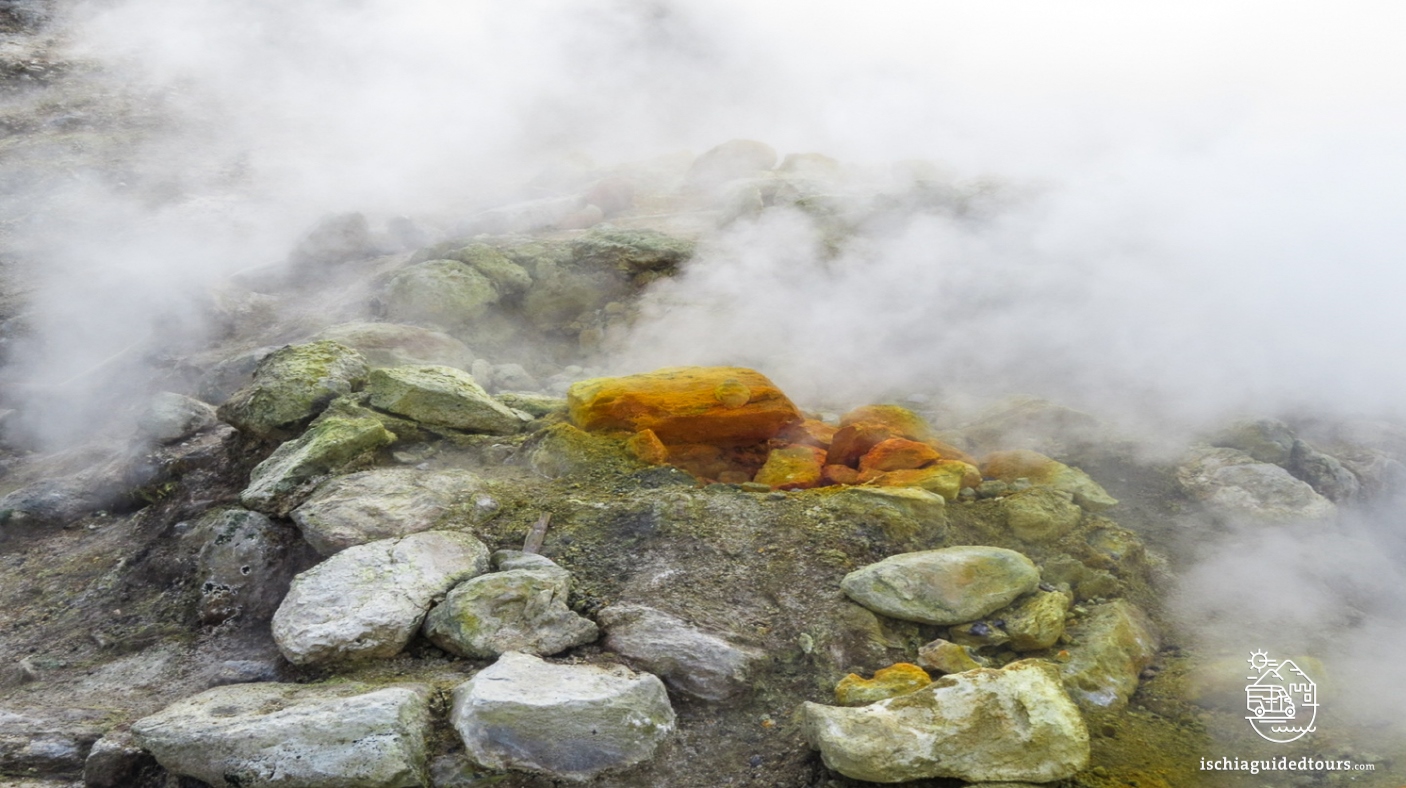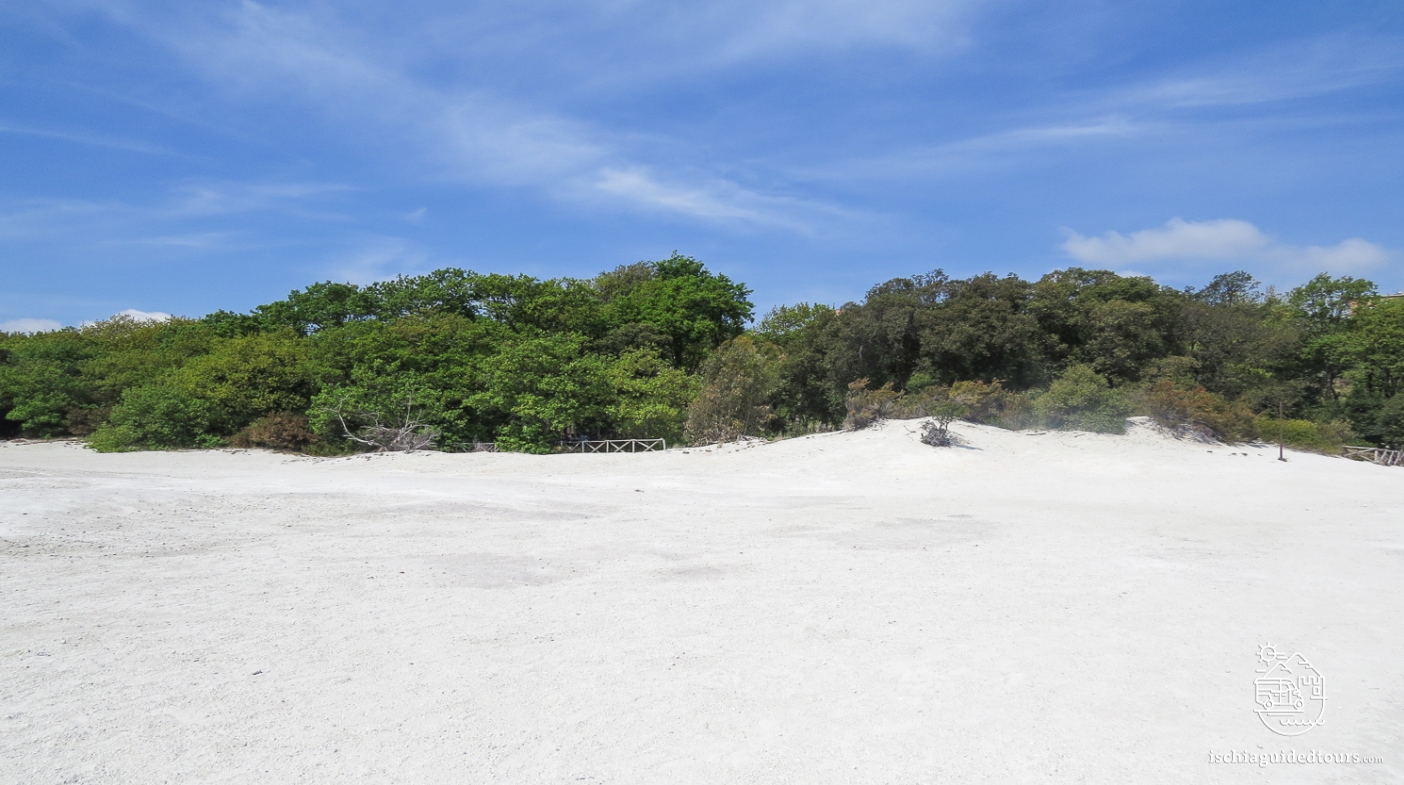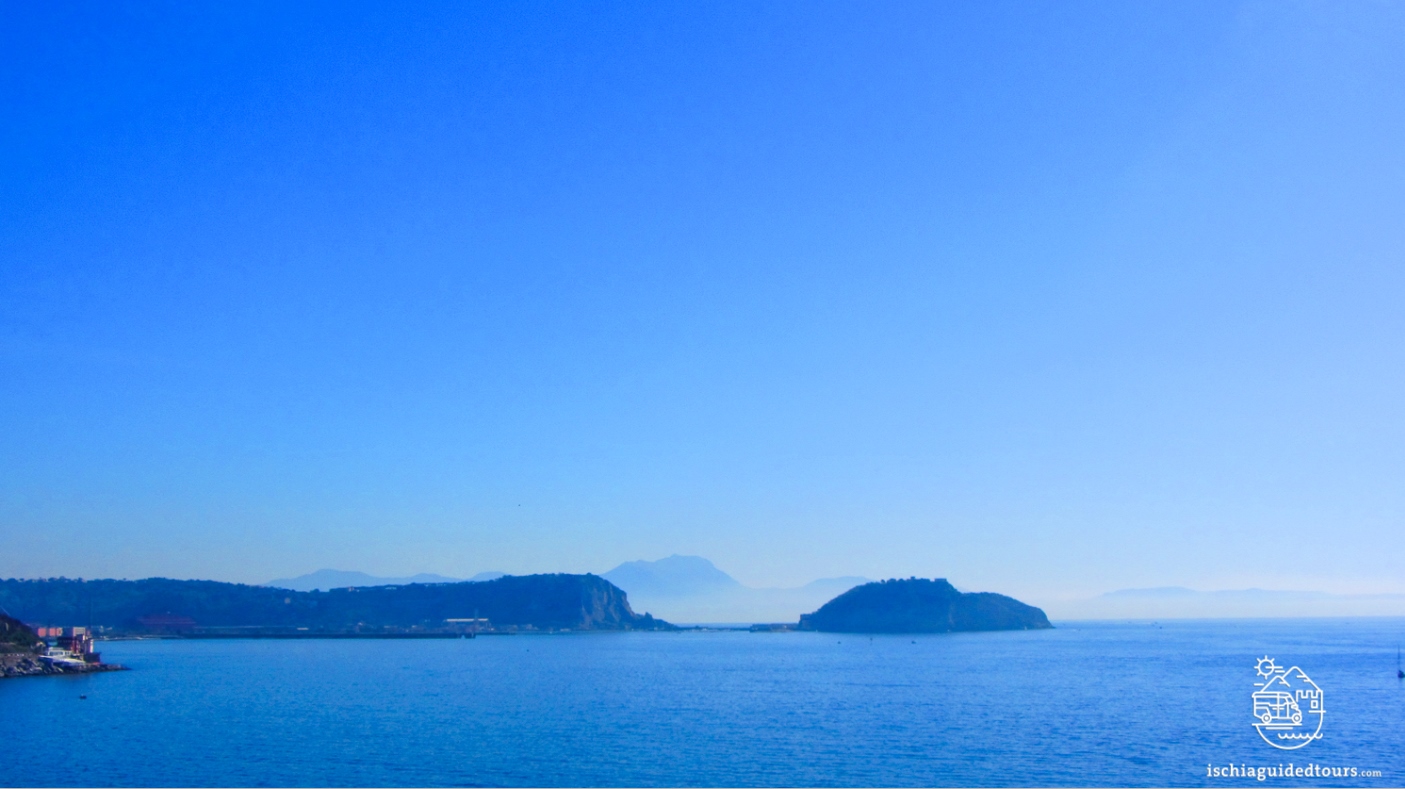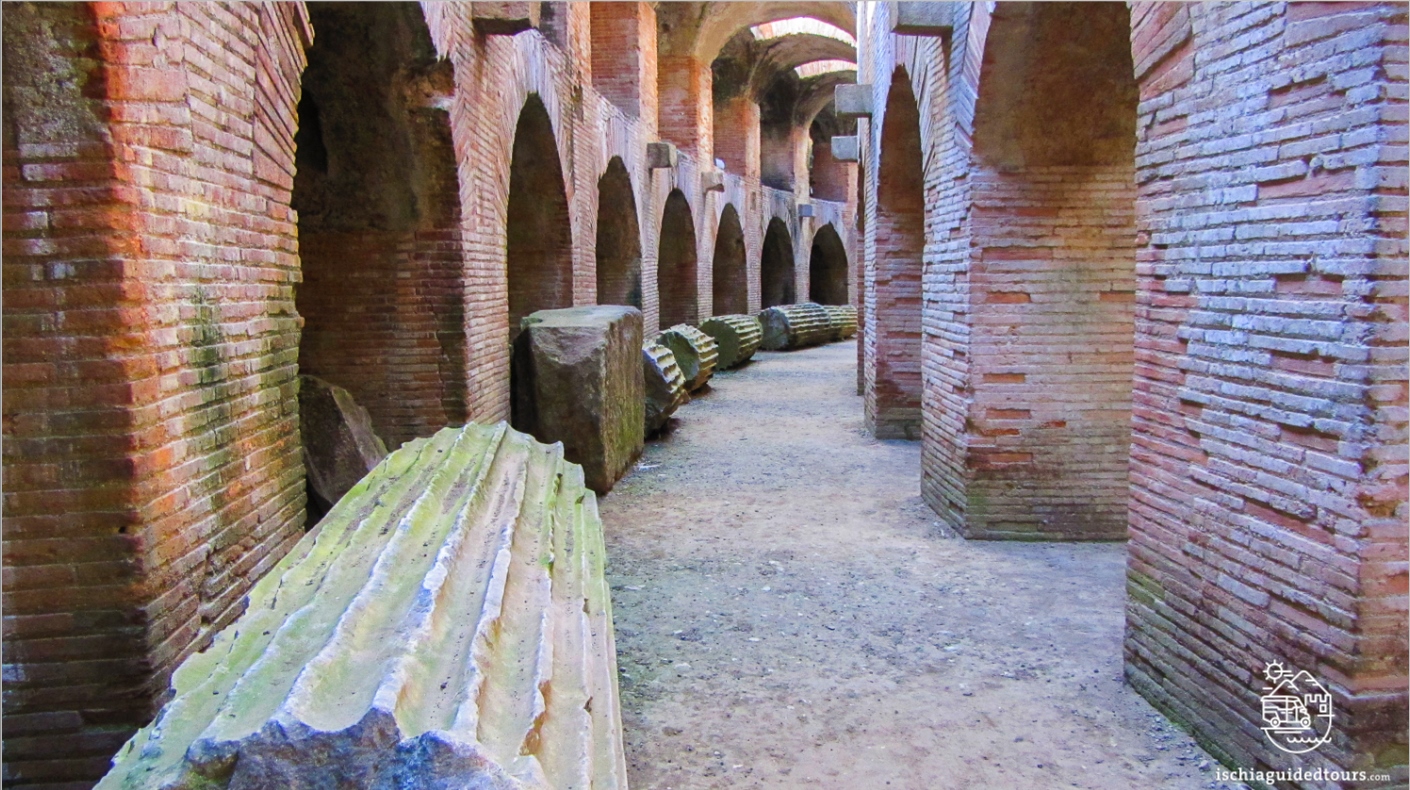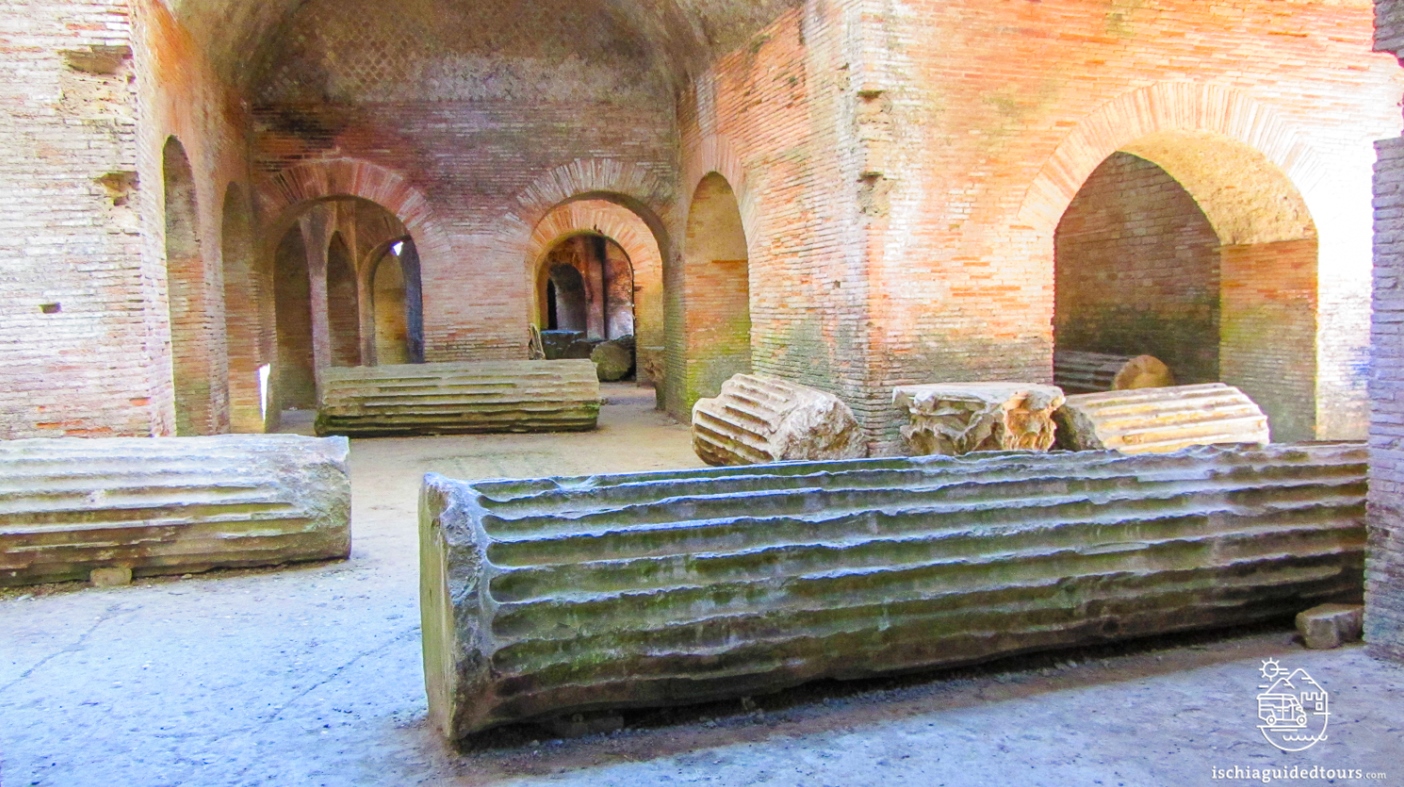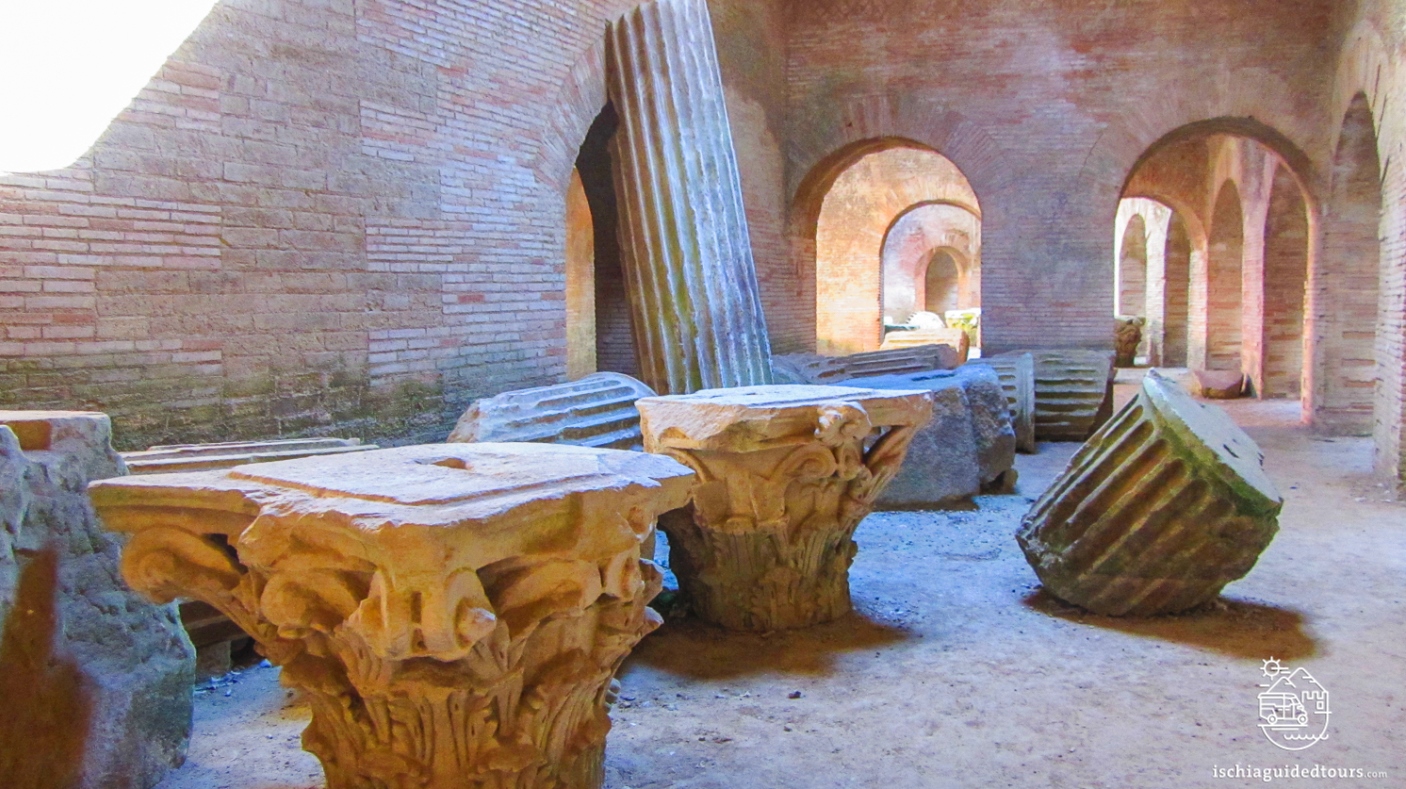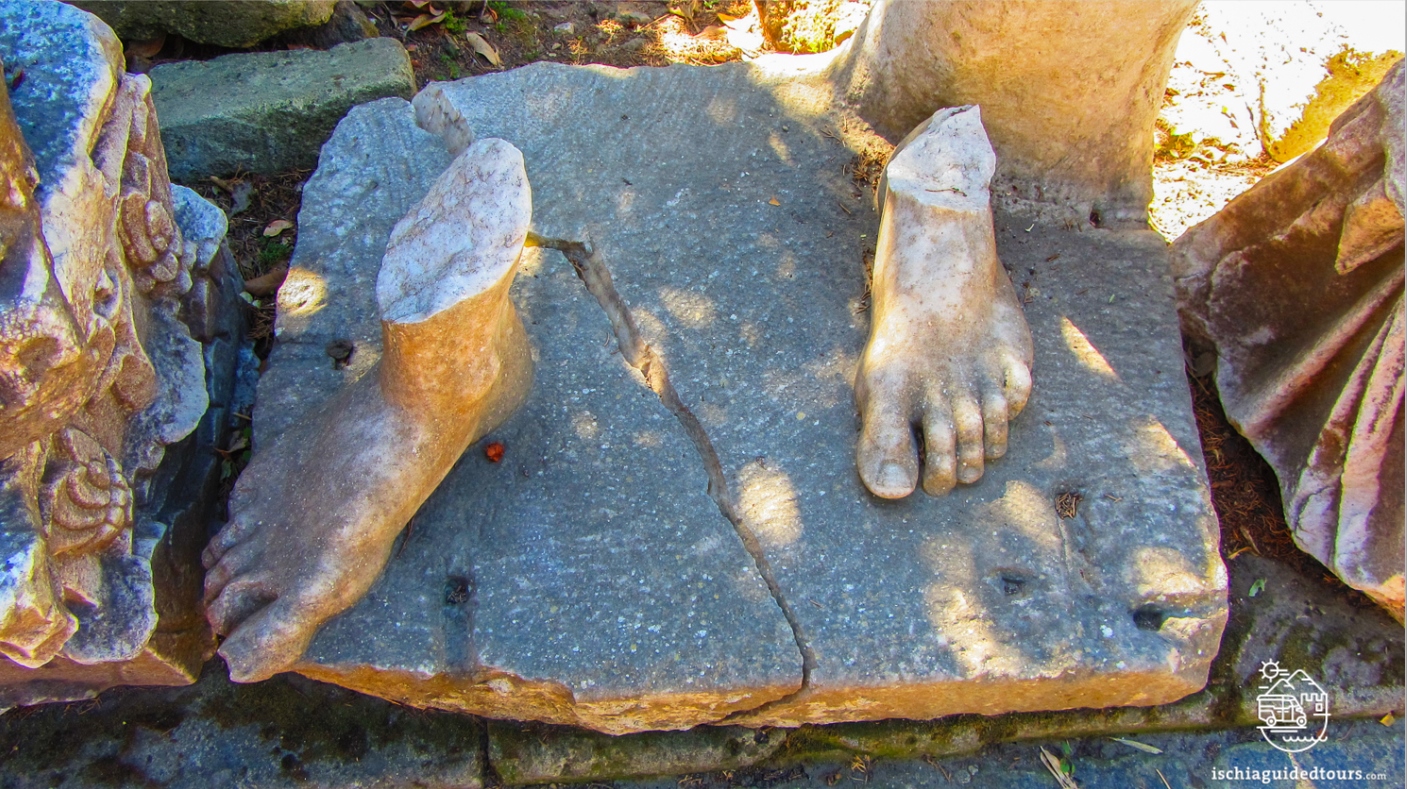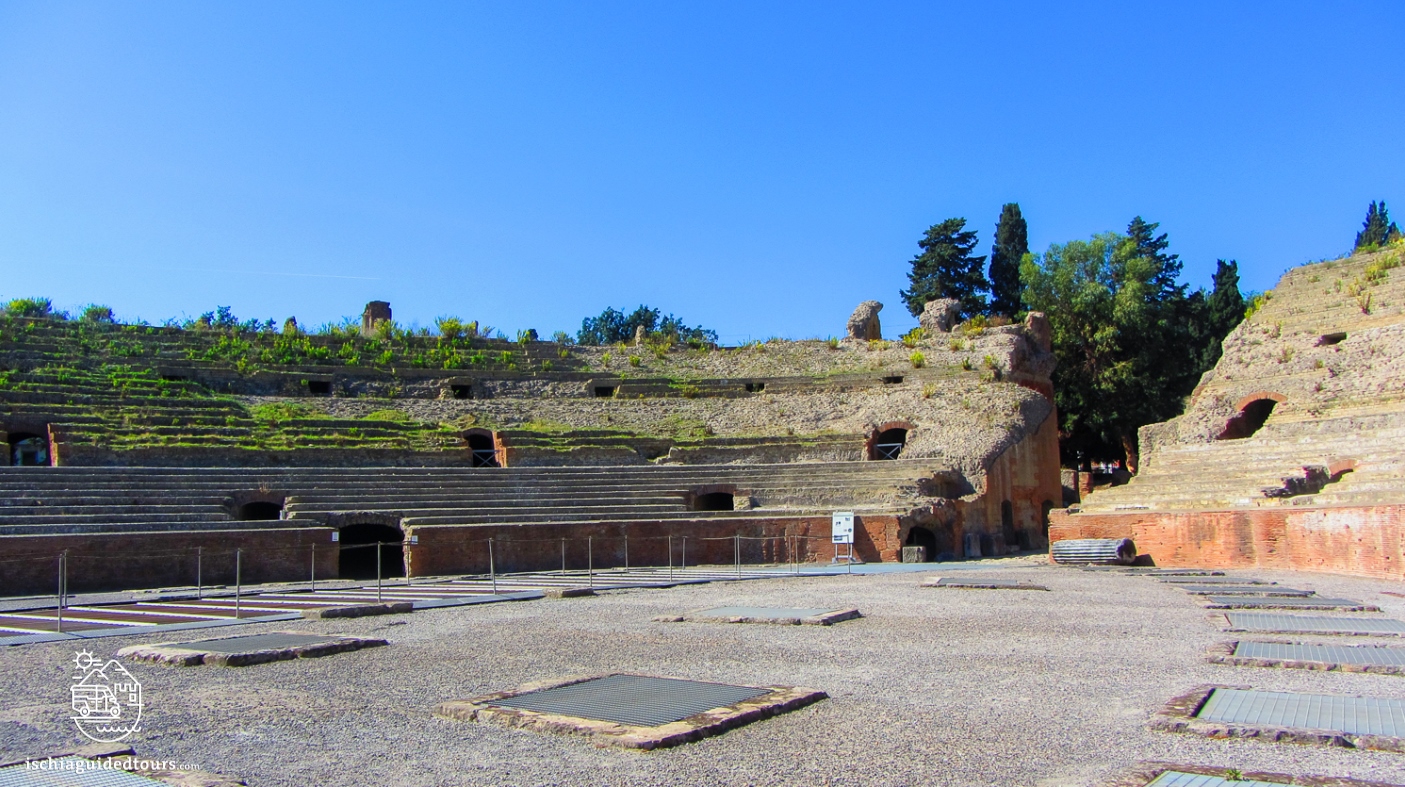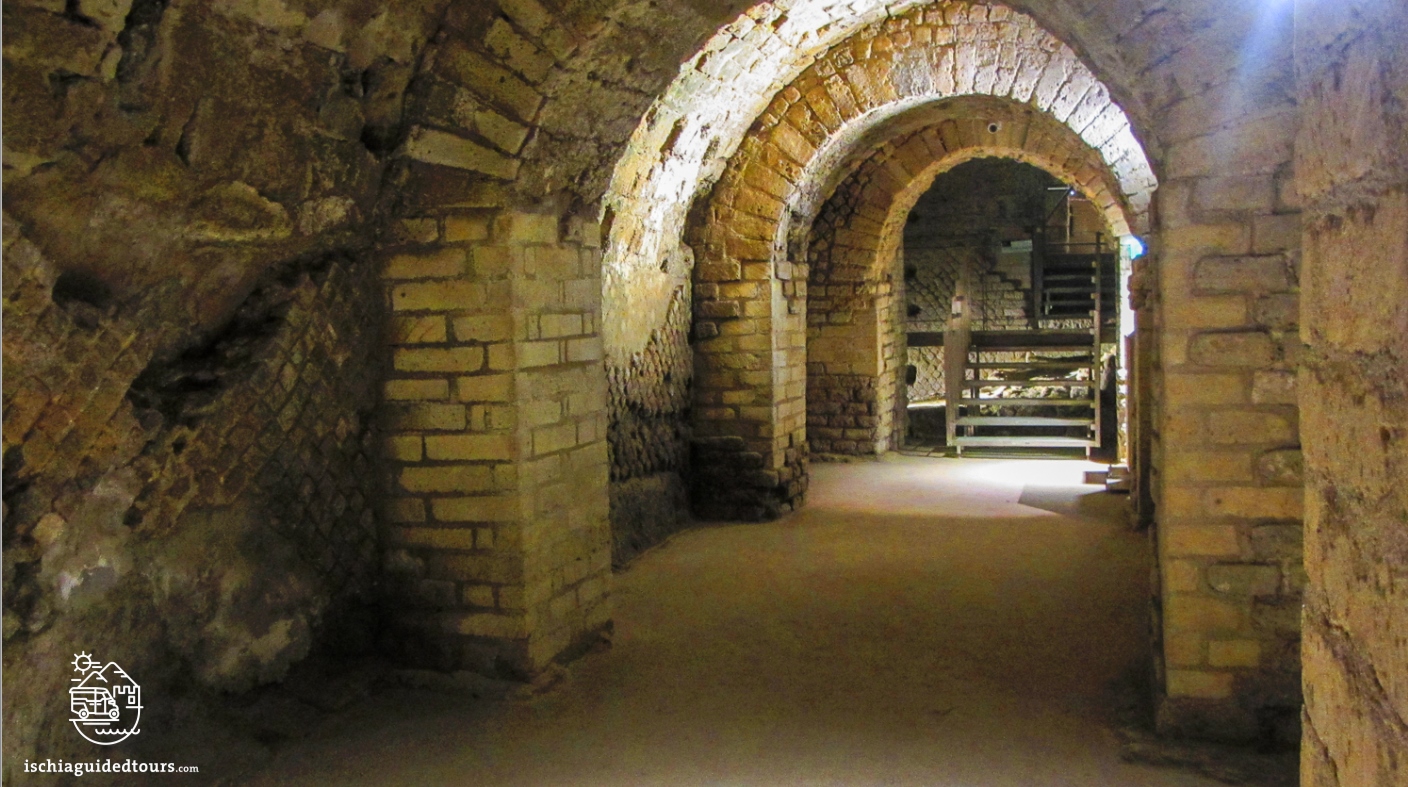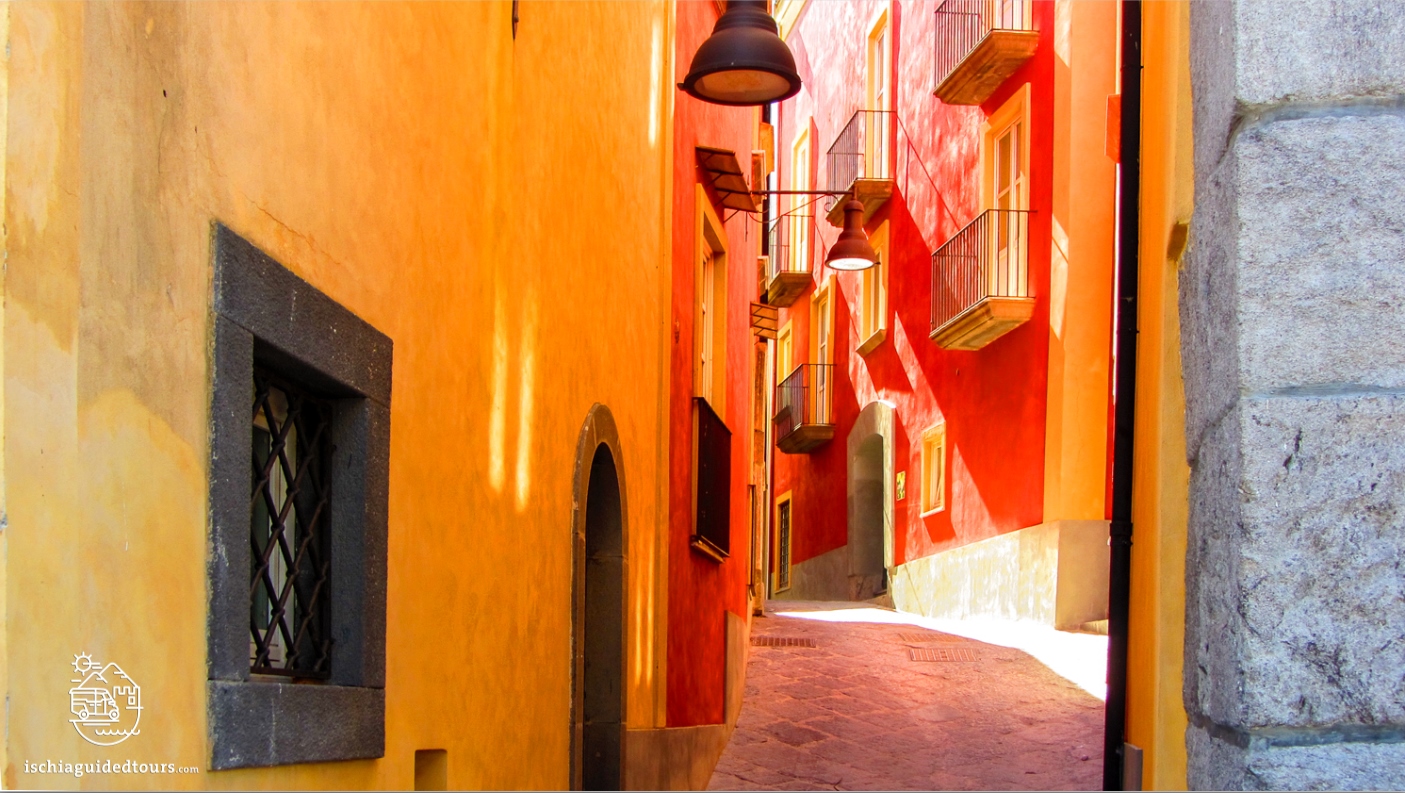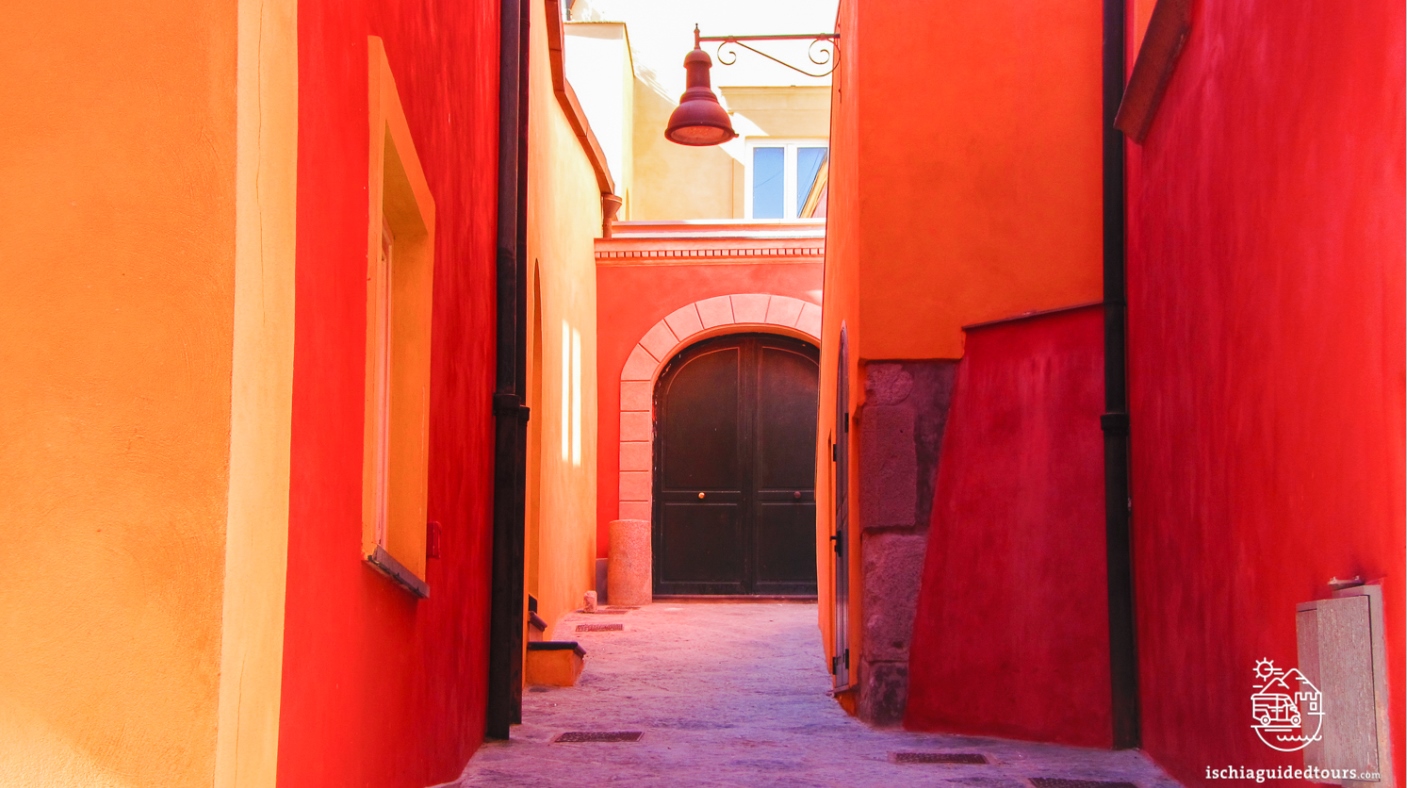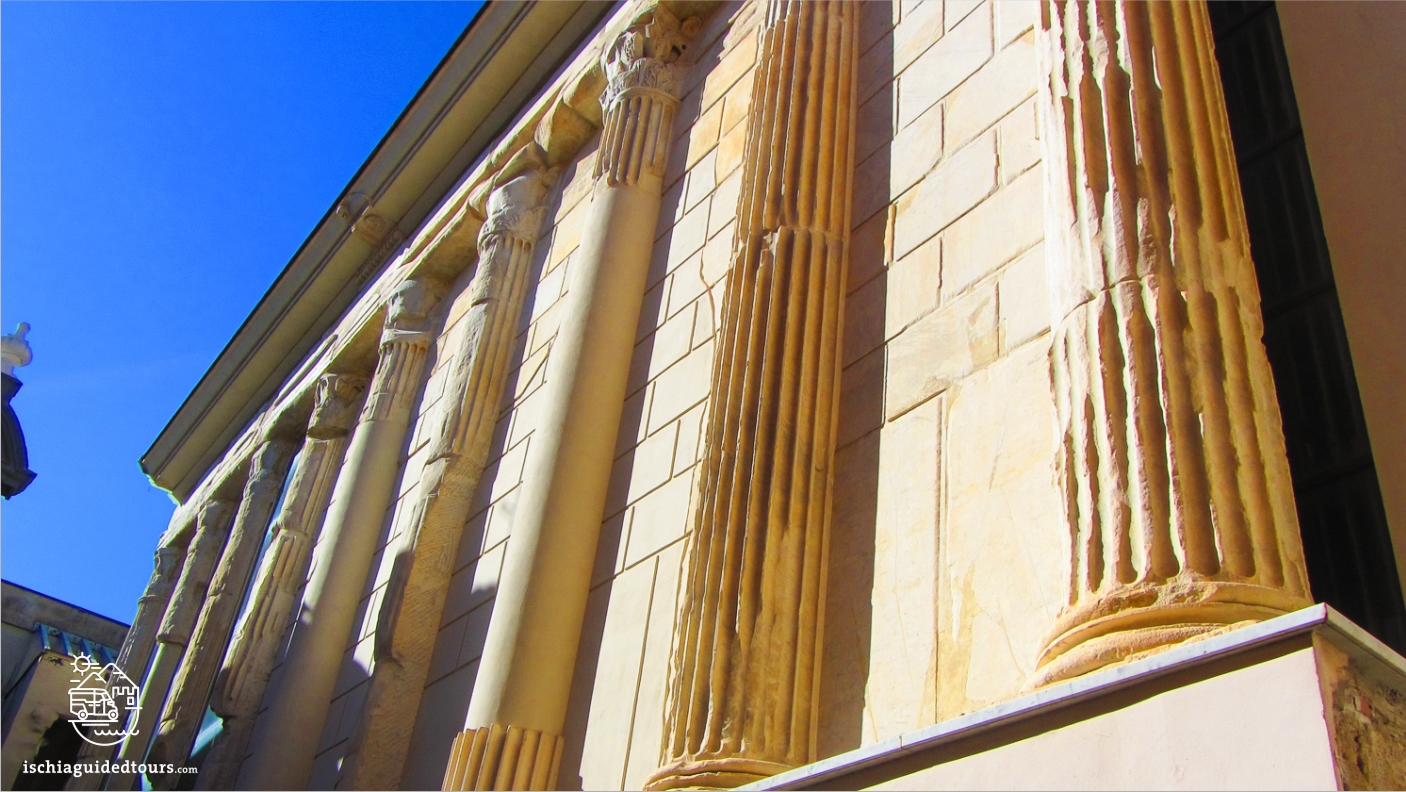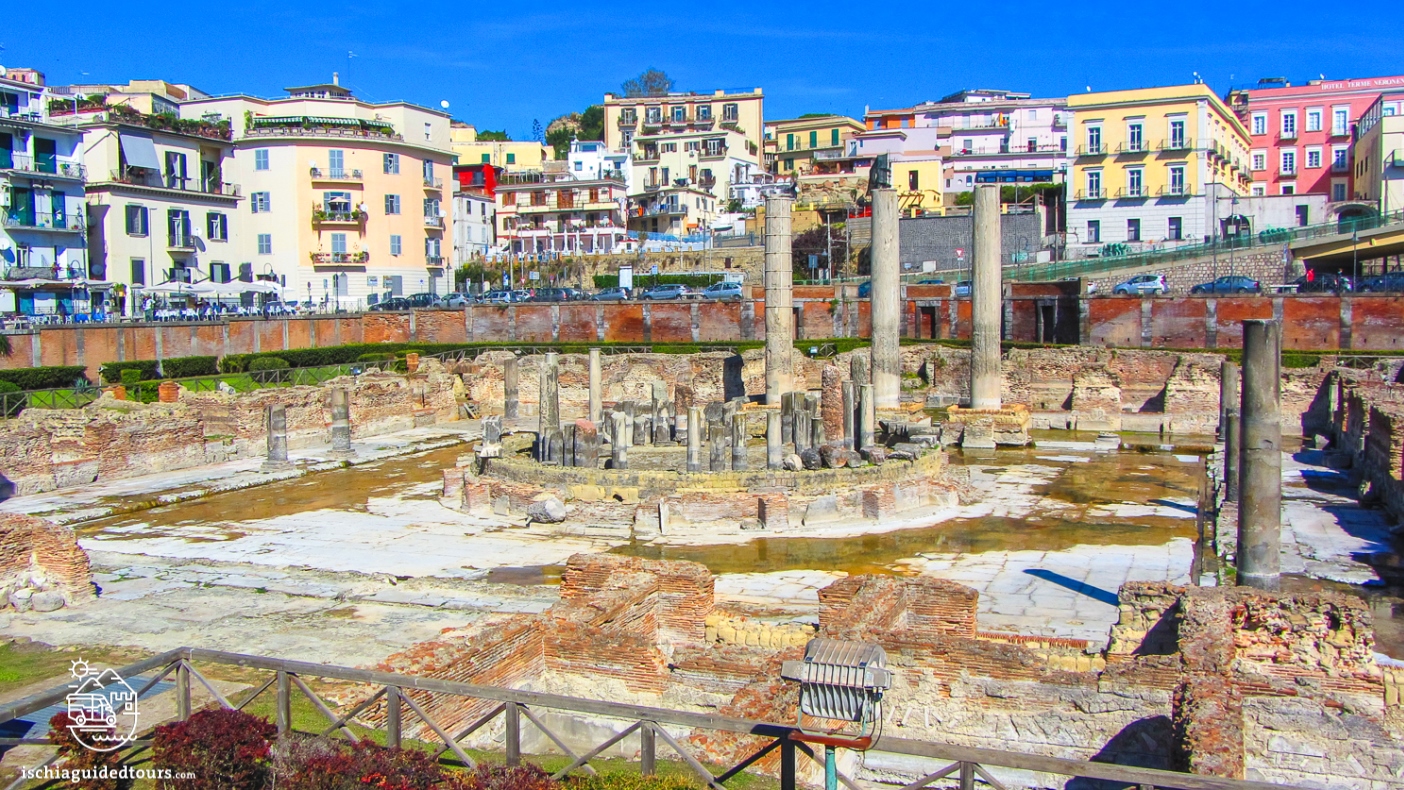The “Phlegran fields” (in Italian, Campi Flegrei) are a vast volcanic area west of Naples whose name derives from the Greek word phlegraios, “burning hot”, due to volcanic activity dating back to ancient times. This land has always fascinated ancient colonizers thanks to its intriguing natural landscape. Craters, volcanic lakes, caves, hot gas, fumaroles and earthquakes have all contributed to give this area a magical allure, inspiring numerous myths and legends.
According to the ancient Greeks, this was the land where the battle of the Titans against Zeus took place: these monstrous giants having been defeated by the God, were sent to infest the area, spitting fire and smoke.
Over time some of the Phlegraean volcanic craters have become lakes and one of them, Lake Averno, was considered for centuries the entrance to the afterworld, the Hade, which the poet Virgil describes as the door to hell. The name of the lake comes from the Greek A-ornon, “without birds”, because the birds that flew over the lake would die due the suffocating sulphuric vapours. Earthquakes and eruptions have been changing the topography of this area for thousands of years, right up to recent times. The youngest mountain in Europe, Monte Nuovo (New Mountain) formed in 1538 in only 3 days of uninterrupted, volcanic lava flow, is situated here.
The area also experiences a geological phenomenon called “bradyseysm”, the rising or lowering of ground levels due to fluctuations in magma chambers below the ground. This has caused earthquakes in the past and the abandonment of some areas in different periods. In the city of Pozzuoli, for example, in the 1980s, the ground rose 1.8 meters in just a couple of years and caused the evacuation of an entire quarter, Rione Terra. But earthquakes and volcanic eruptions haven’t stopped the area from being a popular spot for different settlers since ancient times. Still today, the Phlegrean fields have a remarkable number of interesting Greek and Roman archaeological sites (evidence of a glorious past), in addition to incredible natural sights such as volcanic craters, lakes and parks.
Many coastal towns here, such as Baia and Bacoli, were the favourite holiday destinations of wealthy Romans and Emperors. At Baia, famed figures like Julius Caesar, Cicero, Nero, and Hadrian built sumptuous leisure villas by the sea. It is said that Cleopatra was staying at one of the many seaside villas in Baia when Julius Cesar was assassinated in Rome in 44 B.C. In these luxurious villas, so called villae d’otium (leisure villas), guests and hosts would spend time discussing politics or business, enjoying lustful banquets and availing of the pleasures presented by the luxurious thermal spas. Some villas were equipped with systems of tanks for fish farming (especially seashells, oysters and eels) or they were equipped for farming and plantation. In this cases, wealthy Romans combined business with pleasure, taking advantage of the closeness to the sea, the mild climate and the fertile soil.
Other towns and cities had more important military and commercial purposes. Miseno was an important naval base, from where the Roman ships sailed across the Mediterranean to engage in wars and conquests.
The city of Pozzuoli, also located by the sea, was founded by the ancient Greeks under the name of Dikaiarchia (the town of the righteous government) and then named Puteoli by the ancient Romans. During the Augustan Age, Pozzuoli was the most important commercial port of the whole Mediterranean and a flourishing, cosmopolitan trade center. This prosperous, busy center, had two amphitheatres, one of which is still visible today. The Flavian amphitheatre in Pozzuoli, which was probably built under Vespasian, is the 3rd largest amphitheatre in Italy and it could hold up to 40,000 people. The amphitheatre was a popular entertainment centre where combats between gladiators and wild beasts were held.
The Solfatara volcano in Pozzuoli is an incredible place, a crater formed recently (around 4000 years old) and one of the few volcanoes where you can walk into the crater, surrounded by a white, lunar landscape composed of bubbling mud and hot steam. According to the Romans, the Solfatara was the “Forum Vulcani”, the home to Vulcan, the god of fire, and, still today this place inspires and fascinates people due to its surreal and dramatic atmosphere.
